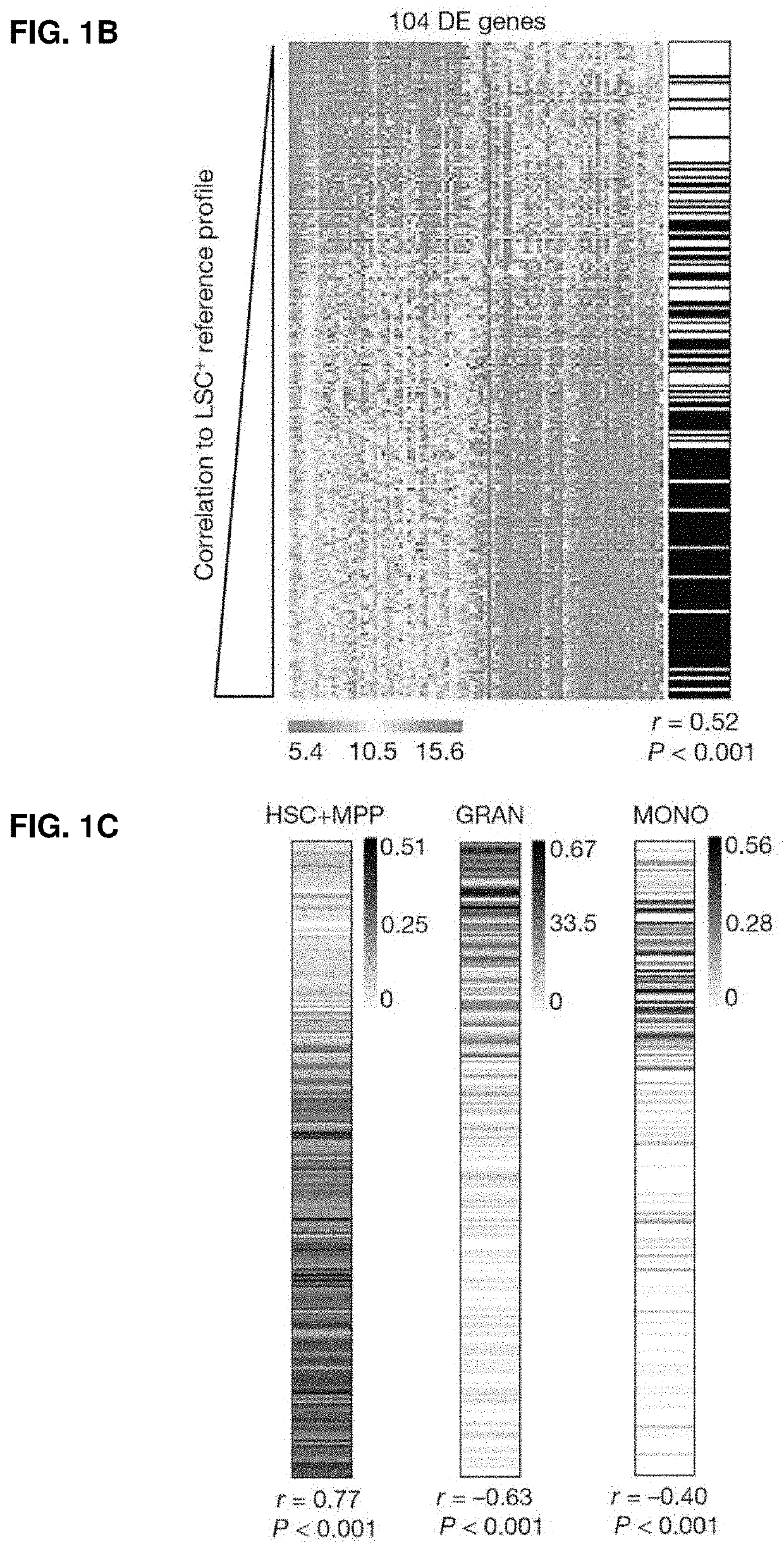Method for identifying high-risk AML patients
a myeloid leukemia and high-risk patient technology, applied in the field of aml patients identification, can solve the problems of poor cytogenetically or mutationally defined adverse risk features, worse outcomes, and higher number of chemotherapy cycles required to achieve morphologic remission
- Summary
- Abstract
- Description
- Claims
- Application Information
AI Technical Summary
Problems solved by technology
Method used
Image
Examples
Embodiment Construction
"d_n">[0082]Methods and Materials
[0083]Functional Assessment of LSCs in Immunodeficient Mice
[0084]83 samples obtained from 78 AML patients were sorted into fractions based on CD34 / CD38 expression prior to transplantation into sublethally irradiated (225 cGy) NSG mice (227 fractions tested). Mice were sacrificed 12 weeks post-transplant and human cell engraftment in the injected right femur (RF) was assessed by flow cytometry using human-specific antibodies: anti-CD3-FITC, anti-CD19-PE, anti-CD33-PE-Cy5, anti-CD45-APC, anti-CD38-PE-Cy7 (all BD Biosciences), and anti-CD34-APC-Cy7 (Beckman Coulter). AML grafts were defined as ≥0.1% human CD45+CD3− cells, with ≥90% CD33 expression. Sorted fractions were defined as LSC+ if transplanted cells generated an AML graft in 1 or more mice; the remaining fractions were defined as LSC−.
[0085]Gene Expression Profiling
[0086]RNA extracted from 138 LSC+ and 89 LSC− fractions was subjected to GE analysis using Illumina human HT-12 v4 microarrays. RNA ...
PUM
| Property | Measurement | Unit |
|---|---|---|
| resistance | aaaaa | aaaaa |
| therapy resistance | aaaaa | aaaaa |
| data structure | aaaaa | aaaaa |
Abstract
Description
Claims
Application Information
 Login to View More
Login to View More - R&D
- Intellectual Property
- Life Sciences
- Materials
- Tech Scout
- Unparalleled Data Quality
- Higher Quality Content
- 60% Fewer Hallucinations
Browse by: Latest US Patents, China's latest patents, Technical Efficacy Thesaurus, Application Domain, Technology Topic, Popular Technical Reports.
© 2025 PatSnap. All rights reserved.Legal|Privacy policy|Modern Slavery Act Transparency Statement|Sitemap|About US| Contact US: help@patsnap.com



